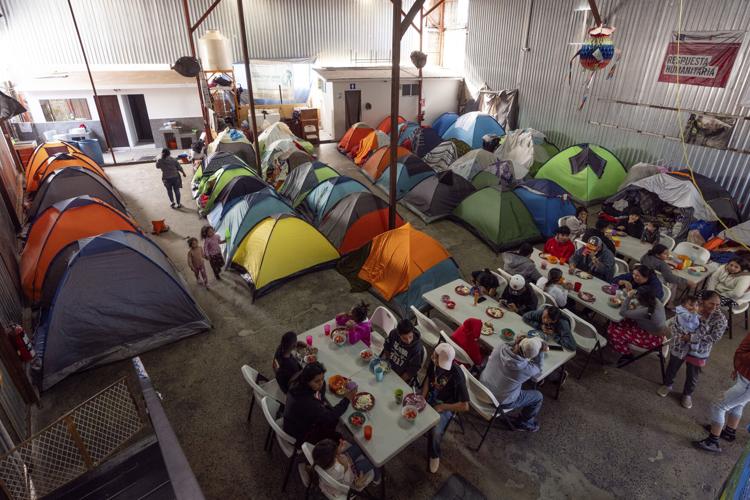As President Donald Trump moves forward with his plan for mass deportations, Mexican border cities are bracing for an influx of migrants. On Wednesday, Mexico began setting up large tent shelters near the U.S. border in Ciudad Juárez, as part of an early response to the expected surge in deportations. The tents, initially intended for Mexican deportees, could expand into a larger operation depending on the number of migrants arriving at the border.
Enrique Serrano, an official from Chihuahua state, which includes Ciudad Juárez, stated that the shelters could be scaled up as needed. Migrants from other countries who are expelled from the U.S. could be relocated to Mexico City or other southern regions, following a pattern established in previous years.
In other border cities like Nogales, Matamoros, and Piedras Negras, authorities are also preparing shelters to accommodate deported migrants. In Tijuana, a border crossing witnessed an emotional scene when migrants, including a group deported from farm fields near Denver, arrived carrying their belongings in small orange bags. While these accounts could not be independently verified, the Mexican government noted that the number of deportations on that day was lower than the previous year’s average.
Despite the lower number of deportations, shelters in cities like Tijuana have been preparing for what could be a significant increase in arrivals. José María Garcia, director of the Movimiento Juventud 2000 shelter in Tijuana, expressed concern that the combination of mass deportations and an influx of migrants from the south could overwhelm the city’s resources, potentially leading to a crisis.
The Mexican government is taking proactive measures to support deportees. It is building nine shelters in border cities and will utilize existing facilities in Tijuana, Ciudad Juárez, and Matamoros. Additionally, Mexico is offering humanitarian aid to migrants whose asylum appointments in the U.S. were canceled. President Claudia Sheinbaum emphasized that Mexico’s goal is to help these migrants return to their home countries voluntarily.
In a significant policy shift, Trump recently ended the CBP One program, which allowed asylum seekers to schedule appointments at the border, creating a more orderly process. The Pentagon has also announced that up to 1,500 active-duty troops will be sent to the border to assist with enforcement.
Meanwhile, in Tijuana, Garcia mentioned that discussions were underway to help border cities prepare for the expected surge of migrants. The Mexican government has committed to providing deported migrants with 2,000 pesos (about $100) upon arrival at the border, in addition to offering bus services to help them return to their homes in Mexico’s interior.
In Ciudad Juárez, Rev. Juan Fierro, head of the Good Samaritan shelter, is also preparing for the challenges ahead. Over the years, his shelter has seen a shift in the type of migrants seeking refuge, from young men looking for work to families seeking asylum. During Trump’s first term, the policy of making asylum seekers wait in Mexico meant that many stayed at the shelter for extended periods, sometimes up to three years. Now, Fierro is anticipating another wave of arrivals.
His shelter, which typically houses 180 people and provides meals for 50, has seen a significant decrease in numbers over the past year. However, with the expected rise in deportations, Fierro is concerned about the shelter’s ability to accommodate the influx. He hopes to give deportees a few months to consider their options, whether that involves returning home, seeking work in other parts of Mexico, or attempting to re-enter the U.S.

